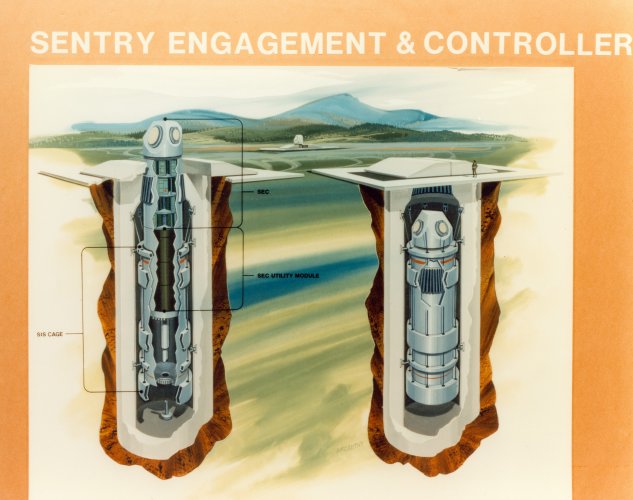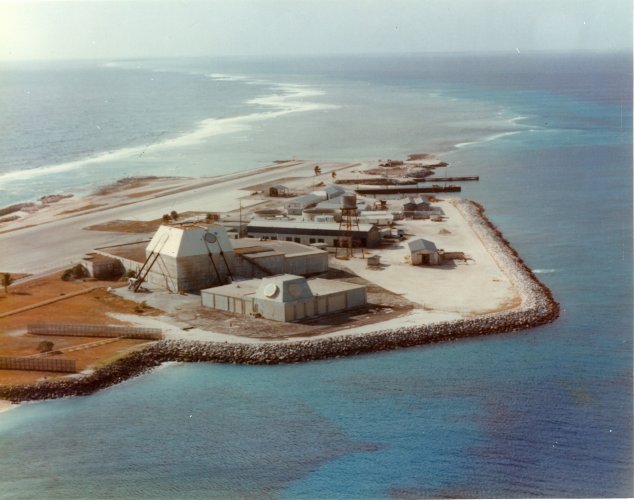THE MERITS OF A LIMITED BALLISTIC MISSILE DEFENSE
(By Patrick J. Friel)
How should the U.S. respond to the development of the ICBM-delivered thermonuclear weapon by the Chinese People's Republic (CPR) or any limited-resource nation? I believe that the most reasonable response is the deployment of an "area type" ballistic missile defense (BMD) system.
This article discusses an area BMD system. It also covers the possible response of the Soviet Union to the deployment of Safeguard; the value of a limited BMD as an alternate (other than a massive retaliatory strike by our strategic offensive forces) U.S. response to a small ac- cidental attack ·by the Soviet Union; the role of the Safeguard system in protecting our strategic forces and thus limiting their size; and some technical approaches to arms control.
U.S. Response to the CPR Nuclear Threat:
The U.S. has at least three options in responding to the deployment of ballistic missiles by the Chinese People's Republic or, for that matter, any limited-resource nation.
1. A massive-retaliation deterrent (the so-called "assured destruction" policy).
2. Preparations to destroy a potential attacker's missile forces themselves at some level of provocation (the "counter force" policy).
3. A limited ballistic-missile defense.
There is a fourth alternative, i.e., a policy of doing nothing, which may be tantamount to forcing the U.S. into a formal assured-destruction policy.
An assured-destruction policy with respect to the CPR could well involve the destruction of upwards to 200-million people, if we apply the same criteria as we have to the Soviet Union (25% to 30% fatalities) -- an incredible holocaust.
Even so, it is not clear that the Chinese would be deterred by the existence of such forces, since they have publicly stated that they believe that thermonuclear weapons are "paper tigers." (This, of course, is one reason for admitting the CPR into the United Nations. Presumably, they could learn and hopefully understand the disaster of a thermonuclear exchange.)
For credibility, it would be necessarry for the President or the Secretary of Defense to announce formally the massive-retaliation policy with respect to the CPR or other nuclear-armed limited-resource nation. This would mean that a rich, powerful, Western, and predominantly white nation would threaten to destroy an Eastern poor, non-white nation in the event of a limited thermonuclear attack. Even if such a policy is justified from the U.S. viewpoint, its very existence could heighten the tensions between whites and non-whites in the world.
The second option would be to develop the ability to destroy any missile force developed by the CPR. If this were our only response to the potential Chinese threait, then the U.S. would be put in the position of being the aggressor, even though the target would be "inanimate" missiles.
The U.S. attack would have to occur at some unpredictable level of provocation -- a very difficult, if not impossible, policy to implement. In fact, this policy might even require a willingness to absorb damage from a few missiles before destroying the remainder of the CPR forces.
The third option, a limited BMD, prevents reliably blackmailing the U.S. into some untenable position with a threat to destroy a few of our cities and some 5-20-million Americans. Its principal disadvantages include the cost --i t would consume national resources that could go to other and possibly more pressing problems -- and the possiblllty that it would push another spiral in the arms race with the Soviet Union.
I think that it has been shown quite clearly that it is not technically feasible to build a ballistic-missile defense, within any cost, that would provide adequate protection against a determined attack on our urban centers by a nation with the resources of the USSR.
A simple calculation would show that an effective terminal urban defense against even 10,000 missiles (both the Soviet Union and the U.S. now have about 1000 groundbased missiles) would fail if the opponent built only a few hundred more and casualties could still be in excess of 100 million, even assuming a defense effective against sophisticated penetration aids.
Thus, within the state of our technology, an urban defense against a nation with large technical and material resources does not seem to be practical, and therefore, an assured-destruction policy with respect to the Soviet Union ts the only reasonable response.
(I might add that the limiting technology appears to be the traffic-handling ability of radars, and more basically, the fact that an interceptor missile must be used to destroy the attacking missile. As long as a "flying machine" must be used as a defensive weapon, the defense will always be "saturated" at some attack level. A vast change in our technology -- e.g., the introduction of some sort of radiation weapon-would be required to change this fundamental technical fact.)
However, a limited defense system aimed at defending ourselves against a Chinese attack (or an attack by any limited-resource nation) would escalate the cost of developing an effective force on the part of the Chinese to prohibitive values beyond their resources.
In fact, the possession of a limited defense by the Soviets and ourselves would make an entrance into the "thermonuclear club" too expensive for almost all the nations of the world. Thus, the temptation on the part of any nation to invest their resources in the development of thermonuclear weapons would be substantially reduced and the effectiveness of any small missile force alone would be essentially nil.
The fourth possibllity, to do nothing, I would repeat, means implementing an assured-destruction policy with respect to the CPR.
I think we should realize that many of those who are on principle opposed to any form of ballistic-missile defense are in fact the architects of our present assured-destruction policy with respect to the Soviet Union.
It is not certain that the extension of this policy to the Chinese and any other limited-resource nation will be as effective as it has been with respect to the Soviet Union.
Safeguard Against a Small Attack:
Thus I see compelling reasons for deploying a limited BMD. The proposed Safeguard program will include, of course, the long-range Spartan missile, designed to make an interception outside the atmoshpere.
An important technical variation on the basic Spartan design will also be deployed and will substantially increase its range, by redesign of only its upper stage -- a change which has been in development for some time.
The greater range will enable one Spartan battery to assist another in the event of a concentrated attack of many tons of missiles on one urban area. Thus, if the Chinese should target all of their small force in one metropolitan area, it should be possible to bring to bear more than one battery in the defense of that area.
The improved missile wlll also have the ability to counter a threat from sea-launched ballistic missiles or a fractional orbital bombardment system (FOBS).
The performance characteristics of this modified Spartan will also make it possible to counter some the elementary penetration aids which the Chinese may introduce, such as balloons and chaff.
In addition, the Safeguard system wlll be designed to accommodate any reasonable radar-blackout attack which could be mounted by the potential Chinese forces. The frequency of Safeguard acquisition radar has been chosen to minimize such effects. Moreover, the system will be "• • •" to permit one perimeter radar to assist the other in the initial acquisition and tracking of the threat in a "blackout" attack.
With this limited-area BMD system, the President would not be forced into untenable negotiations with the Chinese or any limited-resource nation with a small number of missiles.
Thus, the area-defense part of the proposed Safeguard with the improved Spartan will provide a significant capability against the limited Chinese forces, even if they should employ elementary penetration aids wtth a small blackout attack or should concentrate their entire force on one section of the country.
I should emphasize that larger forces and technical sophistication would eventually allow the Chinese to penetrate the Safeguard system. If, however, the CPR constructs such a large force -- substantially larger than our projections (a few tons of missiles in a few years) -- we would have no alternative but to formally turn to massive retaliation through the development of an overwhelming assured-destruction capability with respect to the Chinese mainland.
Hopefully, in the interim, the CPR will see the folly of entering into an ever-escalating thermonuclear arms race with the U.S. or, for that matter, the Soviet Union.
Therefore, by creating the area-defense portion of the Safeguard system, we will not be placed in the position of publicly implementing an assured-destruction policy with respect to the Chinese upon the appearance of a few ballistic-missile systems on the mainland of China, or, in any hostile limited-resource nation.




